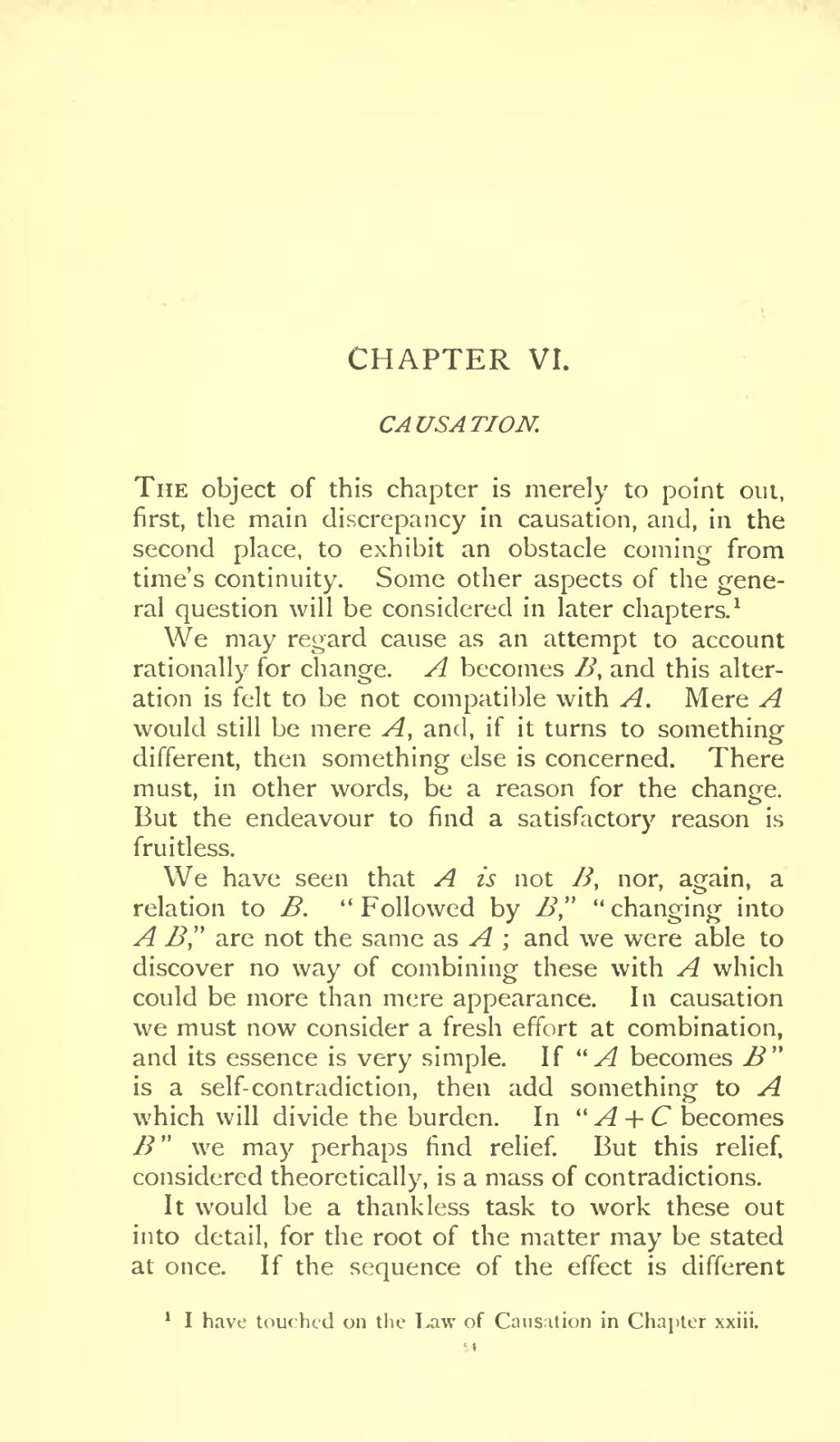CHAPTER VI.
CAUSATION.
The object of this chapter is merely to point out, first, the main discrepancy in causation, and, in the second place, to exhibit an obstacle coming from time’s continuity. Some other aspects of the general question will be considered in later chapters.[1]
We may regard cause as an attempt to account rationally for change. becomes , and this alteration is felt to be not compatible with . Mere would still be mere , and, if it turns to something different, then something else is concerned. There must, in other words, be a reason for the change. But the endeavour to find a satisfactory reason is fruitless.
We have seen that A is not B, nor, again, a relation to B. “Followed by B,” “changing into A B,” are not the same as A; and we were able to discover no way of combining these with A which could be more than mere appearance. In causation we must now consider a fresh effort at combination, and its essence is very simple. If “A becomes B” is a self-contradiction, then add something to A which will divide the burden. In “ becomes ” we may perhaps find relief. But this relief, considered theoretically, is a mass of contradictions.
It would be a thankless task to work these out into detail, for the root of the matter may be stated at once. If the sequence of the effect is different
- ↑ I have touched on the Law of Causation in Chapter xxiii.



